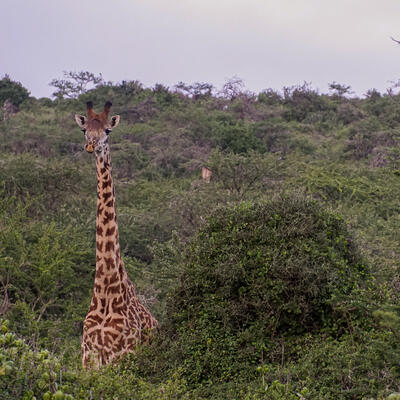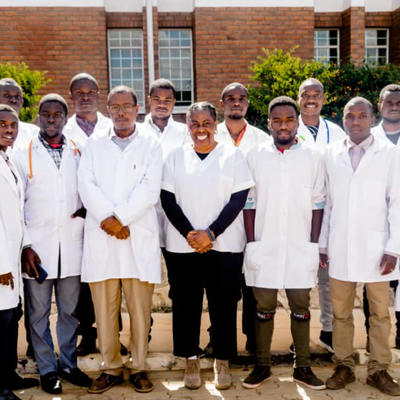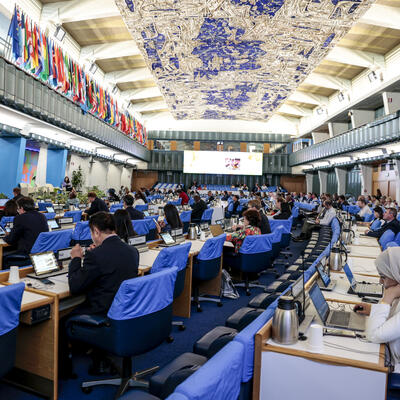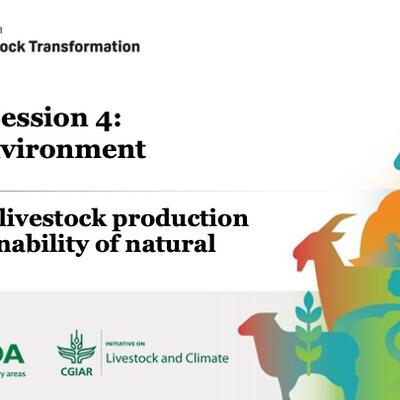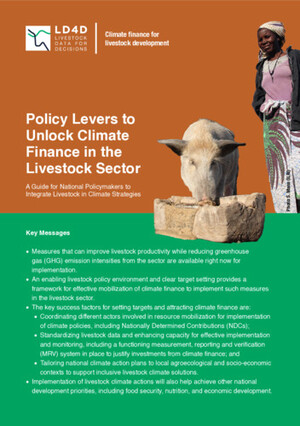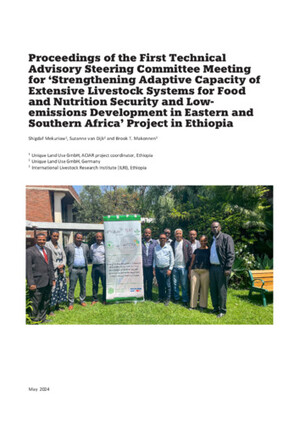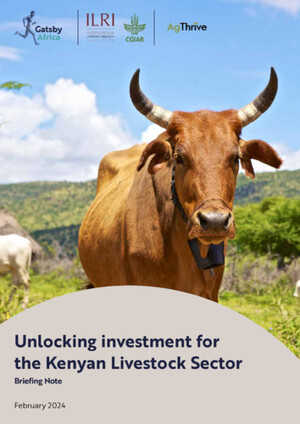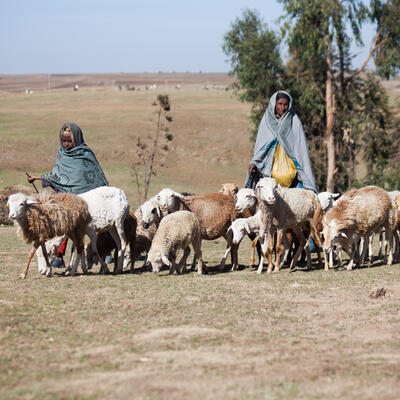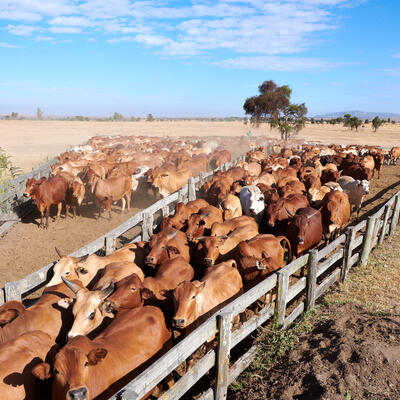
COVID-19 gives the ‘One Health’ approach to tackling epidemics ‘global celebrity status’. Again.
David Nabarro (left, photo credit: DFID and Commonwealth Office)
and Jimmy Smith (photo credit: ILRI/AlexandraDeAthayde).
The article below was first published on the 4SD website:
One Health: Taking a horizontal approach to tackling pandemics
2 Jun 2020.
I am delighted to spotlight this piece about One Health from Jimmy Smith, Director General, International Livestock Research Institute, Kenya. There is a constant need to advance inter-related thought and action on interactions between people, animals and the planet. The One Health approach has made some progress but I would like to see it adopted more rapidly, widely and sustainably. The climate crisis and the COVID-19 outbreaks have exposed the need for sustainable improvements at the interface between humans and nature. An integrated, systems approach is particularly helpful: this means, as Jimmy Smith writes, making every effort to avoid retreating into the comfort of our professional disciplines once we have all worked out how to live with the threat of COVID. We need to stay alert and active at the interface and the One Health movement can help us to do this.
—David Nabarro, co-director of the Imperial College Institute of Global Health Innovation at Imperial College London, strategic director of 4SD and a special envoy of World Health Organization (WHO) director general on COVID-19.
Don’t miss David Nabarro’s earlier inspirational talk
with ILRI staff about ‘living with’ COVID-19—
‘A chance to reimagine life in a way
that creates greater dignity for all’And be sure to listen to David Nabarro’s
series of COVID-19 open online briefings.
Opinion piece by ILRI Director General Jimmy Smith
The current COVID-19 pandemic has once again raised One Health to global celebrity status.
From UN agencies, to academia, international and national development agencies, to governments worldwide, to media and indeed, many of the world’s citizens, the inter-connectedness of human, animal and environment health is recognized. Taking a One Health approach to this and future pandemics is lauded as ‘the solution’.
But we have known about One Health for a long time; Calvin Schwabe is often credited with articulating the concept of ‘one medicine’ in 1964, the paradigm that first recognized the fundamental interaction of humans and animals for nutrition, livelihood and health and on which today’s concept of One Health—the inextricable connectedness of human, animal and environment health—is based.
Recent past pandemics, such as bird flu, swine flu and MERS likewise led to the potential of One Health being acclaimed.
But the present COVID-19 pandemic reveals that the implementation of One Health has not matched its periodic celebrity status.
So what is the problem?
In 2006, David Nabarro, then at the UN, and I in my role at that time at the World Bank, worked together on the HPAI (‘bird flu’) pandemic. Those experiences spurned two volumes highlighting what was needed (and the very favourable economic basis) based on the lessons learned to prevent further—and worse pandemics. As I review these and other similar lessons, my conclusion is that the biggest impediment to realizing the potential of One Health remains institutional.
The biggest impediment to realizing the potential of One Health remains institutional.
It is not that there are not a few strong, exceptional and much-needed institutions, including the WHO-FAO-OIE tripartite.
It is not that there are no totally dedicated and skilled medical, veterinary and environmental practitioners on the frontline right around the world (although sadly in many parts of the developing world they are too few).
Figure 5, p26 World Bank. 2010. People, Pathogens and Our Planet. Volume 1: Towards a One Health Approach for Controlling Zoonotic Diseases. Report No. 50833-GLB.
It is that throughout the world, at every level and with few exceptions, these interrelated One Health disciplines tend to operate in their vertical silos rather than configuring to bring skills together to address the challenges.
The approach needs to change from ‘what is my role?’ to ‘what is the challenge?’
Only by applying the power of co-creation across disciplines and joint responsibilities will we ensure our future world is prepared for future pandemics.
We are good at recognising and even beginning to implement One Health approaches once a crisis is upon us. But all too quickly, even alarmingly, we retreat into our disciplinary homes once it is over. That is a mistake—as evidenced by the predicament we now find ourselves in with COVID-19.
Perhaps this time, as many are saying, there really is an opportunity to ‘build back better’ and to put in place practical One Health institutional mechanisms that can prevent future pandemics.
A prerequisite will be surveillance systems that connect across human, animal and environment health from the village to national and global levels.
To have village clinicians incentivised to share animal and human health observations with their veterinary colleagues, to have veterinarians whose responsibilities include informing public health officials, to have global coordination and resourcing that coalesces health, veterinary and environmental disciplines in equal measure to tackle common challenges. To work, horizontally—addressing the challenge.
One of the fundamental dimensions that will better equip us to work in such an integrated way is to begin with education and training. When I worked with the deans of US and Canadian universities at the time of the avian flu pandemic, Dean Emeritus Lonnie J. King was one of the first to take the lessons to heart and to establish a One Health curriculum at Ohio State in 2009.
My organization, the International Livestock Institute (ILRI) works to improve food and nutritional security and to reduce poverty in developing countries through research for efficient, safe and sustainable use of livestock. As a CGIAR research centre, ILRI’s livestock research takes an integrated approach to mitigate development challenges impacting on the world’s most vulnerable including food and nutrition security, livelihoods, climate change, health and wellbeing. Challenges and inequities that are being exacerbated by the current COVID-19 pandemic and for which CGIAR is marshalling its collective strength to address.
One Health has long been one of the key pillars to ILRI’s work and through it’s One Health centre is engaging with global experts to strengthen and focus its global One Health strategy.
COVID-19 has made us realise that new heights of collaboration, integration and innovation are urgently needed especially between health, veterinary and environmental disciplines.
Never before has the world had so much technology and innovation at its disposal in all these areas.
Never before has it needed to integrate and apply these advances with such urgency.
Never before has the necessity to work horizontally to tackle the challenges been greater.
Read the original article by Jimmy Smith on the 4SD website: One Health: Taking a horizontal approach to tackling pandemics, 2 Jun 2020.









